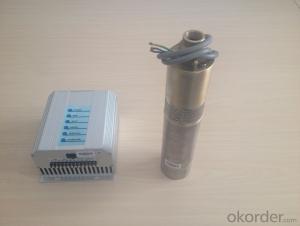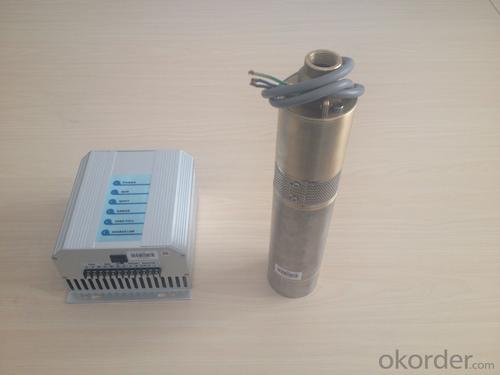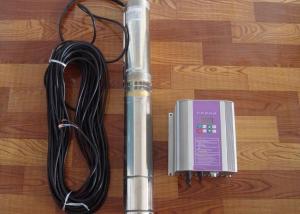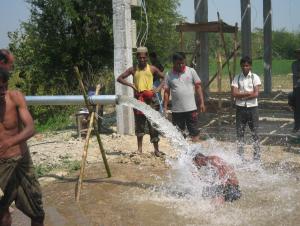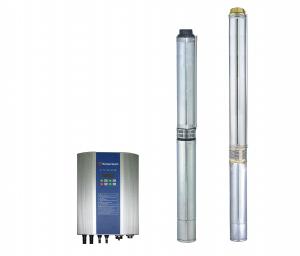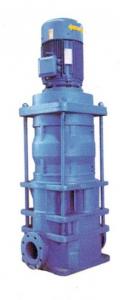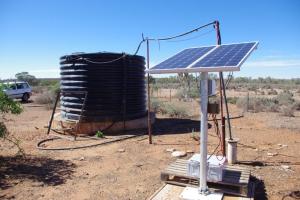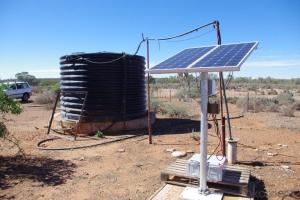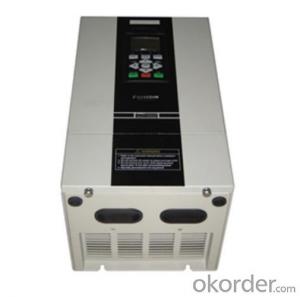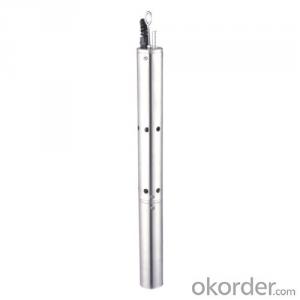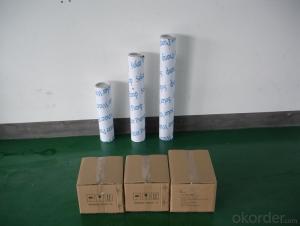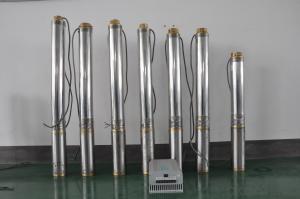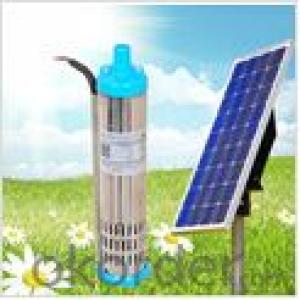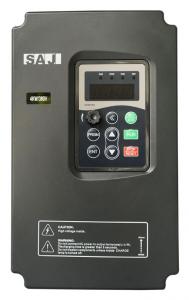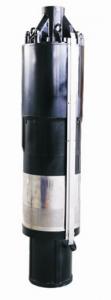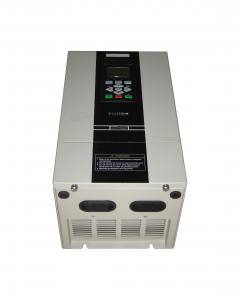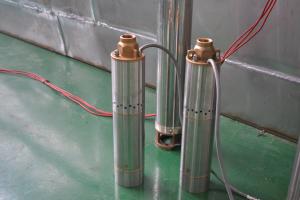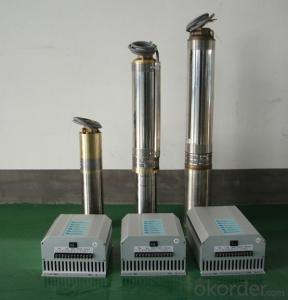Solar Pump Station - DC Solar Submersible Water Pumps
- Loading Port:
- China Main Port
- Payment Terms:
- TT OR LC
- Min Order Qty:
- -
- Supply Capability:
- -
OKorder Service Pledge
OKorder Financial Service
You Might Also Like
Item Description :
This superb new addition to our solar fountain range comes with a 10w solar panel,and a powerful fountain pump that is capable of producing fountains of up to 2m in height. As well as being easy to set up and use.Instruction manual is supplied for assembly and maintenance.
Solar Fountain Key Features :
Powered by direct sunlight
No high voltage electric mains required
Safe for children
Max. height of fountain: 2M
Max. flow capacity: 800 L/H(176 GAL)
10W Polycrystalline solar panel included
18V DC brushless pump
Solar Pump Features :
Can produce fountains up to : 2M (tube height) 1.4M (fountain height)
Comes with multiple nozzle accessories
Cable Length : 5M
Solar Panel Features :
10W peak power.
Polycrystalline highly efficient solar panel
Comes mounted in aluminium frame
Comes with ground stake and rotating knob so you can angle your panel toward the sun
What You Will Get :
10W solar panel
Solar pump
Ground Sake
Nozzle accessories
Precautions :
DO NOT alter or change the product itself or its components
Operate pump in freshwater only, never above 50 degrees celsius
Keep away from flammable liquids
Do not connect to any other power supply other than the included
- Q: Can a solar pump be used for irrigation in hilly or sloping terrains?
- Yes, a solar pump can be used for irrigation in hilly or sloping terrains. Solar pumps are versatile and can be installed in various locations, including hilly or sloping terrains. These pumps use solar energy to power them, which means they do not require a connection to the grid or fuel to operate. This makes them highly suitable for remote and challenging terrains. Additionally, solar pumps can be installed at different levels to cater to the varying terrain, ensuring efficient water distribution across the slope. They can provide a sustainable and environmentally friendly solution for irrigation needs in such terrains, reducing the reliance on conventional energy sources and minimizing the carbon footprint.
- Q: What are the different types of solar pumps?
- There are three main types of solar pumps: submersible solar pumps, surface solar pumps, and floating solar pumps. Submersible solar pumps are installed underwater and are commonly used for irrigation and water supply in remote areas. Surface solar pumps are placed above the water surface and are suitable for small-scale irrigation or domestic use. Floating solar pumps are designed to float on the water and are typically used for ponds, lakes, or reservoirs.
- Q: Can a solar pump be used for water supply in off-grid military bases?
- Yes, a solar pump can be used for water supply in off-grid military bases. Solar pumps are reliable and efficient, utilizing solar energy to power the pump and provide a sustainable water supply. They are particularly suitable for off-grid locations where access to electricity may be limited or unreliable. Additionally, solar pumps are cost-effective and environmentally friendly, making them an ideal solution for water supply in off-grid military bases.
- Q: Are there any limitations on the water pH or alkalinity that a solar pump can handle?
- Yes, there are limitations on the water pH and alkalinity that a solar pump can handle. The specific limitations can vary depending on the type and design of the solar pump system. However, generally, it is recommended to keep the water pH level within the range of 6.5 to 8.5, and the alkalinity levels within acceptable industry standards. It is important to consult the manufacturer's guidelines or technical specifications for the solar pump system to determine the exact limitations and ensure optimal performance and longevity of the equipment.
- Q: Can a solar pump be used in conjunction with a battery?
- Yes, a solar pump can be used in conjunction with a battery. The battery can store excess energy generated by the solar panels during the day, allowing the pump to continue functioning at night or during cloudy weather when there is no sunlight available. This combination ensures a reliable and continuous water supply.
- Q: How does a solar pump handle voltage variations in different countries?
- A solar pump typically handles voltage variations in different countries by utilizing an inbuilt voltage regulator or controller. This component ensures that the pump receives a consistent and appropriate voltage level, regardless of the voltage fluctuations in the local electrical grid. It helps protect the pump's motor and other internal components from potential damage caused by either overvoltage or undervoltage. Additionally, some solar pumps also include mechanisms such as maximum power point tracking (MPPT) to optimize energy conversion and further adapt to varying voltage conditions.
- Q: Can a solar pump be used for hydroponic farming?
- Indeed, hydroponic farming can utilize a solar pump. This farming technique involves cultivating plants in water infused with essential nutrients, eliminating the need for soil. By employing a solar pump, the hydroponic system can maintain water circulation and aeration. This eco-conscious approach relies on solar energy to operate the pump, reducing dependence on conventional electricity sources. Besides, solar pumps are renowned for their affordability and ease of maintenance, rendering them perfectly suited for hydroponic farming systems.
- Q: Are there any limitations to the type of pump technology that can be used in a solar pump system?
- Yes, there are limitations to the type of pump technology that can be used in a solar pump system. One of the primary limitations is the power output of the solar panels. The pump technology used must be compatible with the power output of the solar panels in order to efficiently and effectively pump water or other fluids. Another limitation is the size and weight of the pump. Solar pump systems are often used in remote locations where transportation and installation can be challenging. Therefore, the pump technology used must be compact and lightweight to facilitate easy transportation and installation. Additionally, the type of fluid being pumped can also impose limitations on the pump technology. For example, if the fluid being pumped is corrosive, the pump technology used must be able to withstand the corrosive properties of the fluid. Furthermore, the depth and distance that the pump needs to move the fluid can also impact the type of pump technology that can be used. Different pump technologies have different limitations in terms of the maximum depth and distance they can effectively pump fluids. Lastly, budget constraints can also be a limitation when choosing the pump technology for a solar pump system. Some pump technologies may be more expensive than others, and the available budget may limit the options in terms of pump technology selection.
- Q: What is the maximum size of debris that a solar pump can handle?
- The maximum size of debris that a solar pump can handle depends on the specific design and specifications of the pump itself. Generally, solar pumps are equipped with a filtration system that is designed to prevent large debris from entering the pump and causing damage to its internal components. However, it is important to note that the exact maximum size of debris that a solar pump can handle may vary from one model to another. Some solar pumps may have a larger filtration system and can handle larger debris, while others may have a smaller filtration system and can only handle smaller debris. To determine the maximum size of debris that a particular solar pump can handle, it is recommended to refer to the manufacturer's specifications or user manual. These documents usually provide information on the pump's filtration system and any limitations regarding the size or type of debris that the pump can effectively handle.
- Q: Can a solar pump be used in areas with high levels of algae or bacteria in the water?
- Yes, a solar pump can be used in areas with high levels of algae or bacteria in the water. Solar pumps are primarily designed to move water from a source to another location using solar energy, and they do not directly interact with the water's quality. However, it is important to note that the water being pumped may still contain algae or bacteria, and appropriate water treatment methods or filters should be used to ensure safe consumption or usage.
Send your message to us
Solar Pump Station - DC Solar Submersible Water Pumps
- Loading Port:
- China Main Port
- Payment Terms:
- TT OR LC
- Min Order Qty:
- -
- Supply Capability:
- -
OKorder Service Pledge
OKorder Financial Service
Similar products
Hot products
Hot Searches
Related keywords
